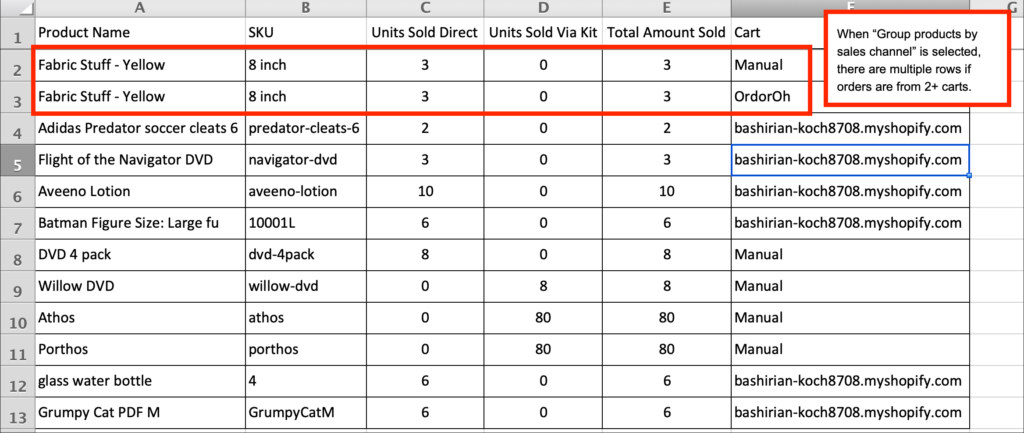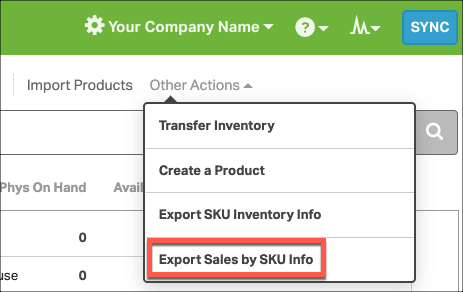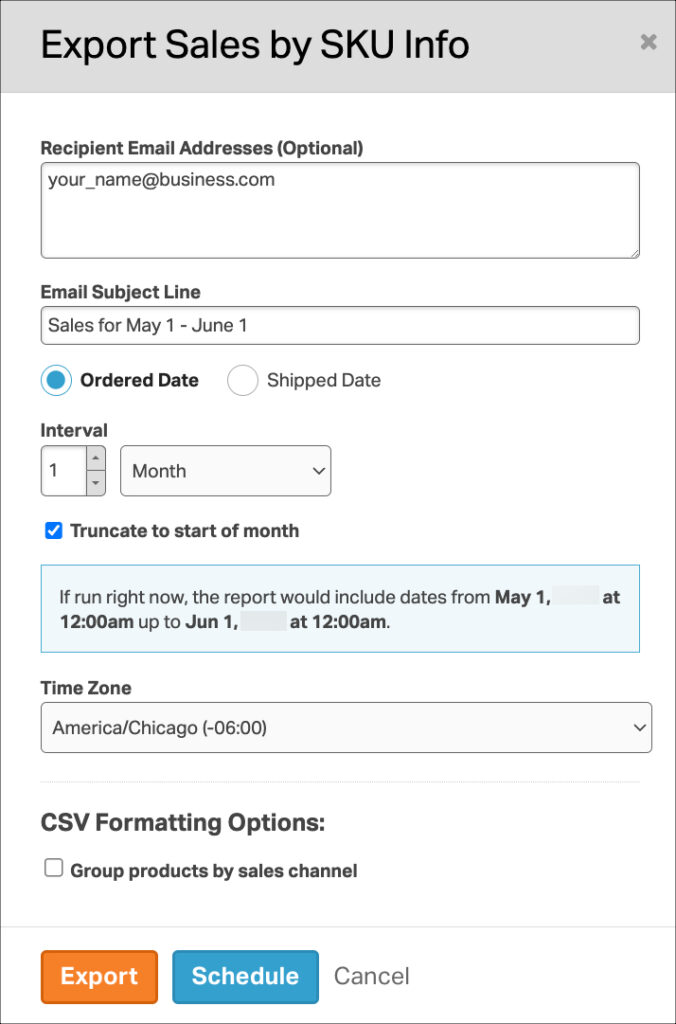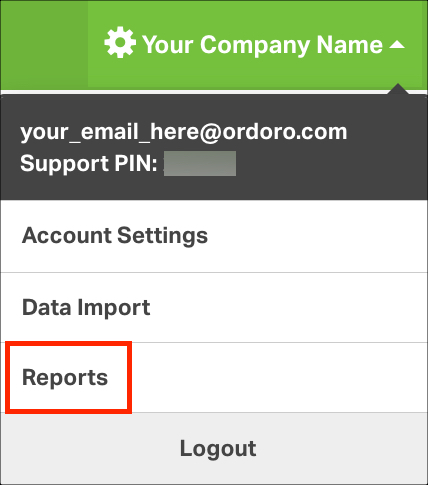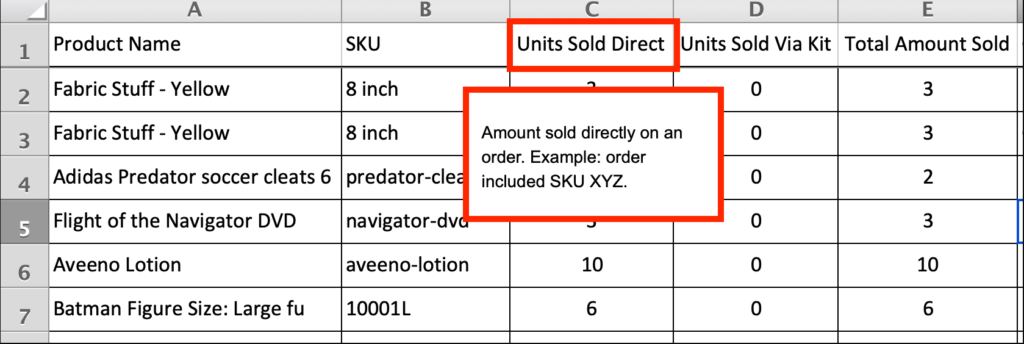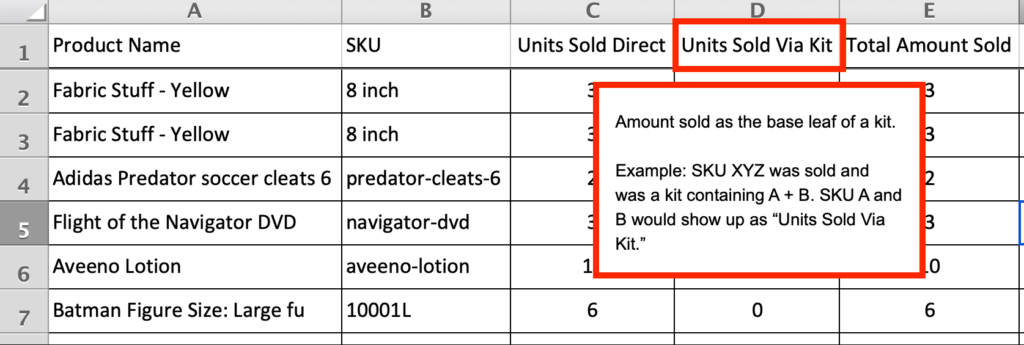Navigate to our Analytics pages to gain insights into your top-performing items, spotlighting the top 20 bestsellers. If you’re interested in a broader scope, you can also access a comprehensive list of all products sold during a specific date range.
For step-by-step guidance on exporting this valuable information, refer to the instructions below.
Topics:
How to export from the Products page
1. Click on the Products tab in the green bar.
2. Select Other Actions -> Export Sales by SKU.
3. A pop-up will appear so you can select the Report parameters.
- Recipient Email Addresses
- Enter the email(s) to receive the report. For a list of emails, use a comma to separate them.
- Email Subject Line
- Customize the subject line of the report email.
- The date filter for your report.
- Ordered Date: When the order was placed in your sales channel.
- Shipped Date: When the order was shipped in Ordoro.
- Interval
- Interval Options:
- Specific Date Range
- Hour
- Day
- Week
- Month
- If you select Hour, Day, Week, or Month – then Ordoro uses your current time to run the report.
- Example: if the current time is 9:18am, selecting “Hour” will return results from 8:18am to 9:18am.
- Truncate to start of hour / day / week / month
- By selecting this option, the report will run from the start of the chosen interval (minute 0) to the end of the same interval (minute 0).
- Example: if the current time is 9:18pm, selecting the truncate option will return results from 8:00am to 9:00am.
- Interval Options:
- Time Zone
- Group products by sales channel
- This will list a separate row per cart. If this is unselected, then only one row per SKU will be displayed.
- For example, SKU ABC was sold on Amazon and Shopify.
- If Group products by sales channel is selected, the report will list two rows: one for Amazon and the other for Shopify.
- If Group products by sales channel is not selected, the report will list one row for the total sales from both Amazon and Shopify.
5. Select Export or Schedule.
- If you select Schedule, you’ll be prompted to create a report. See this support article for details.
6. The report will be available in the Reports Activity Log.
- Go to your Company Name -> Reports.
- Select the Activity Log tab. You’ll see the CSV file to download.
What the report looks like
The CSV will contain the following columns:
- Product Name
- SKU
- Units Sold Direct
- The amount sold directly on an order (i.e. was not a kit.)
- Units Sold Via Kit
- For example: SKU XYZ was sold.
- SKU XYZ is a kit with components SKU A and SKU B.
- SKU A and B would appear as Units Sold Via Kit.
- Total Amount Sold
- The sum total of Units Sold Direct and Units Sold Via Kit.

- Total of Orders Direct
- The amount sold directly on an order (i.e. was not a kit.)
- This is similar to the Units Sold Direct column but represents the number of orders rather than the quantity of items within those orders.
- Total of Orders Via Kit
- This is similar to the Units Sold Via Kit column but represents the number of orders rather than the quantity of items within those orders.
- Number of Units Dropshipped
- This is calculated based on the Units Sold Direct column but reflects the quantity in dropship orders.
- Product Created Date
- When the item was first created in Ordoro.
- Cart (Optional)
- This column will appear if Group products by sales channel was selected.
- The Group products by sales channel option will list a separate row per cart.
